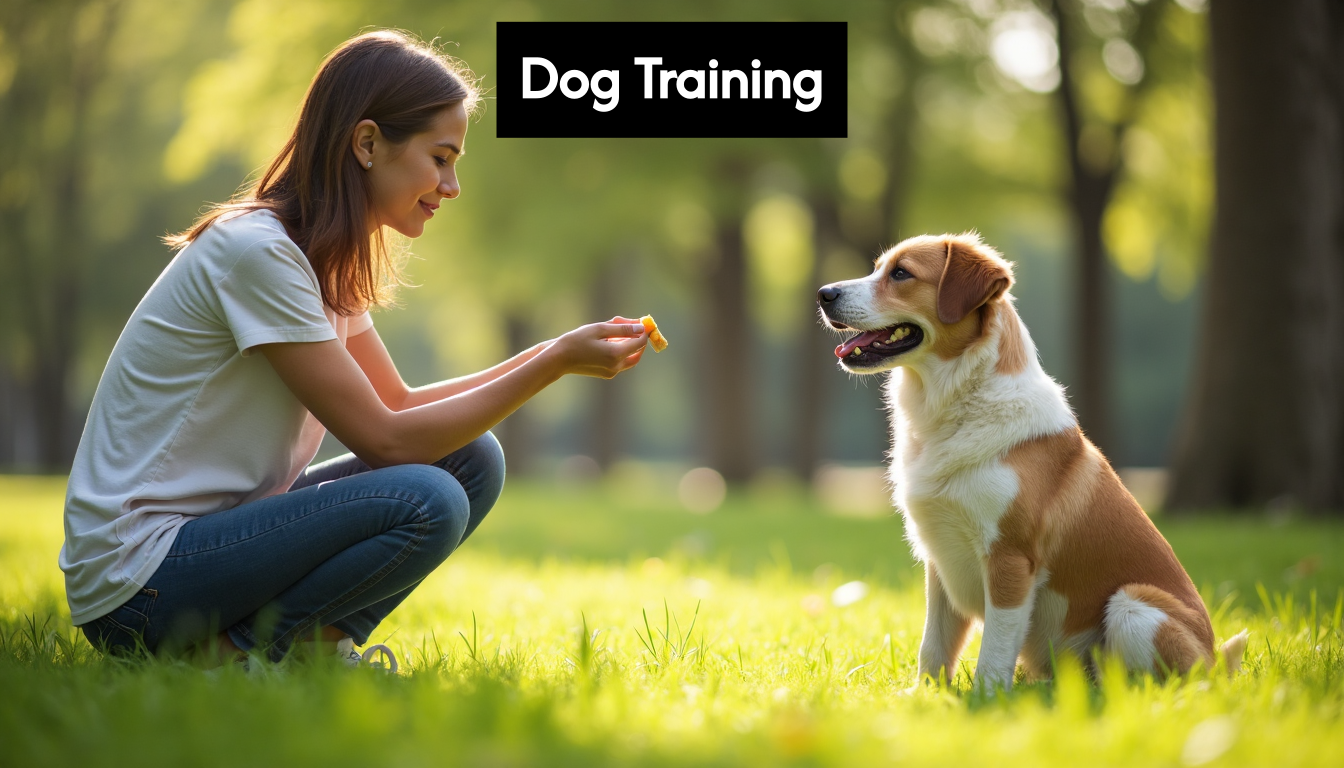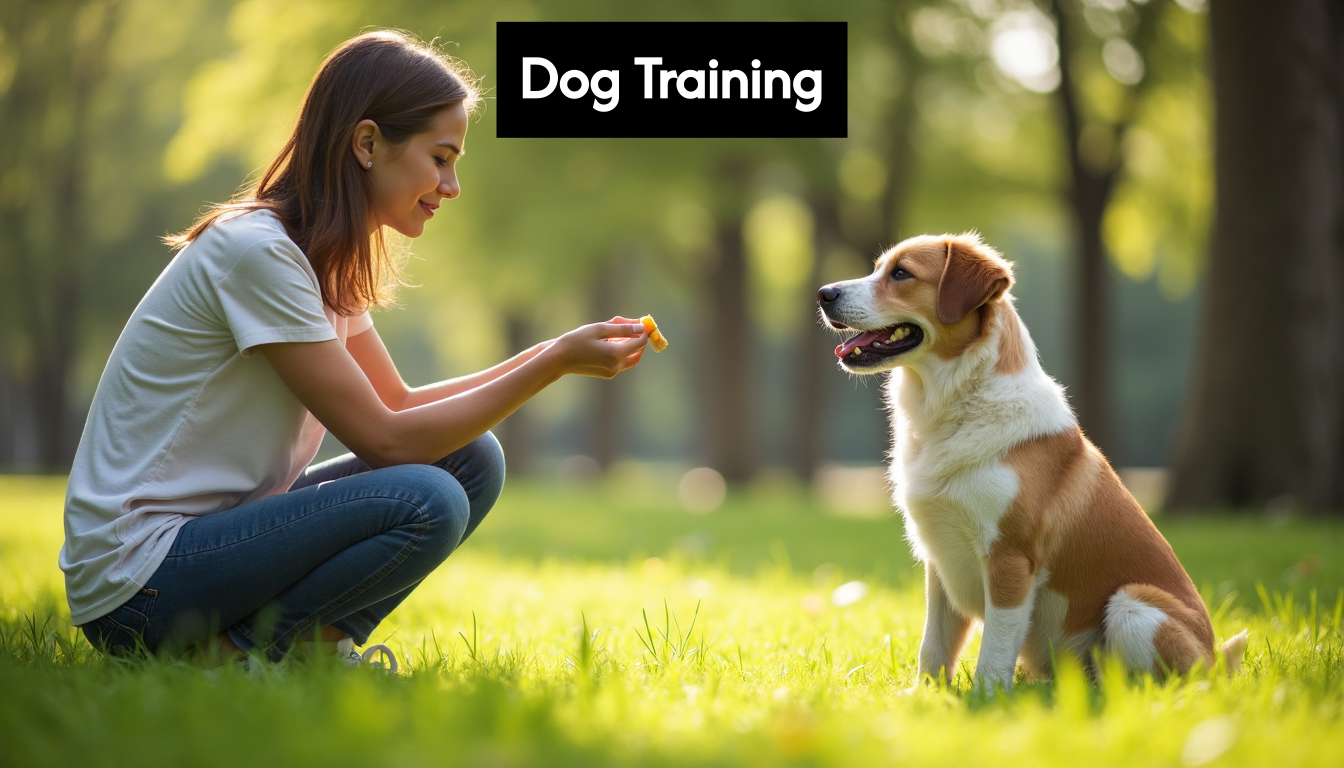
Smart dog training is changing fast, and the numbers do not lie. Customized training methods have improved long-term behavior by up to 75 percent over traditional classes. Surprised? Most people think a few basic commands and treats are all it takes to raise a well-trained pup. The real secret is adapting your approach to your dog’s unique personality, role and learning style, which opens the door to much deeper connection and incredible results.
Table of Contents
- Understanding Smart Dog Training Basics
- Tailoring Training For Different Dog Roles
- Effective Positive Reinforcement Methods
- Building Lasting Habits For Every Dog
Quick Summary
| Takeaway | Explanation |
|---|---|
| Positive Reinforcement is Key | Reward-based training is more effective than punishment, leveraging dogs’ natural tendencies to seek positive outcomes for better learning retention and trust building. |
| Tailored Training for Roles | Customizing training approaches based on a dog’s specific role (e.g., service, therapy, family pet) can improve behavior and engagement by considering their unique skills and needs. |
| Consistency is Crucial for Habit Formation | Dogs flourish with clear communication and predictable routines; consistent commands and rewards help solidify habits over time. |
| Technology Enhances Training | Utilizing modern tools such as apps and virtual programs provides owners with resources, tracks progress, and adapts techniques to individual dog personalities. |
| Emotional Connection Aids Learning | Building a strong emotional bond through trust and positive interactions significantly enhances the effectiveness of training and habit formation. |
Understanding Smart Dog Training Basics
Successful dog training goes far beyond simple commands. Modern approaches blend scientific understanding, behavioral insights, and compassionate communication to create meaningful connections between dogs and their owners. The foundation of smart dog training rests on understanding how dogs learn, process information, and respond to different training techniques.
The Science of Canine Learning
Dogs are complex beings with unique cognitive abilities that require nuanced training approaches. Scientific research from animal behavior experts reveals that dogs learn most effectively through positive reinforcement and consistent, clear communication. This means rewarding desired behaviors rather than punishing unwanted actions. The brain of a dog is wired to seek positive outcomes, making reward-based training significantly more powerful than traditional punishment methods.
Modern training techniques leverage principles of behavioral science to create effective learning environments. Dogs respond best to training that feels like a collaborative experience rather than a confrontational one. By understanding their natural communication patterns and psychological motivations, owners can develop more intuitive and successful training strategies.
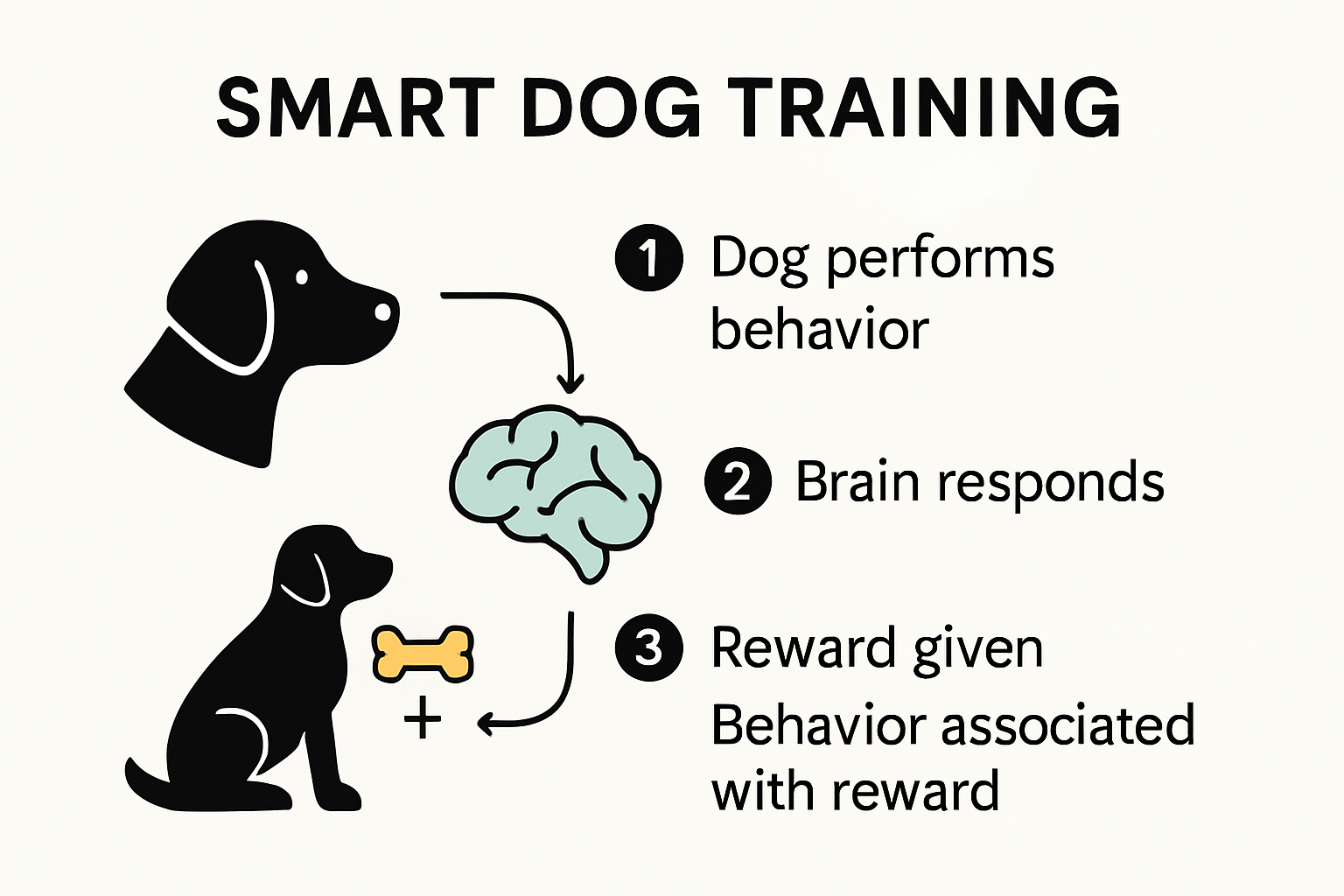
Technology and Training Convergence
Technology is revolutionizing how we approach dog training. Online courses and virtual training programs now provide unprecedented access to professional training resources. Over 266,000 learners worldwide have embraced digital platforms to enhance their dog training skills, demonstrating a significant shift in how pet owners acquire training knowledge.
Smart training tools like mobile apps, tracking devices, and interactive training platforms enable owners to:
- Track Progress: Monitor behavioral improvements and training milestones
- Access Expert Guidance: Connect with professional trainers remotely
- Customize Learning: Adapt training techniques to individual dog personalities
Building a Strong Foundation
The key to successful dog training lies in consistency, patience, and understanding. Every interaction is an opportunity to communicate and reinforce positive behaviors. For owners looking to dive deeper into effective training methods, our comprehensive guide on teaching basic commands offers step-by-step insights into creating a strong training framework.
Remember that each dog is unique. What works for one might not work perfectly for another. Smart dog training is about adaptation, observation, and continuous learning. By combining scientific understanding, technological tools, and genuine compassion, owners can develop training approaches that not only teach commands but also strengthen the incredible bond between humans and their canine companions.
Tailoring Training for Different Dog Roles
Dog training is not a universal strategy but a nuanced approach that must adapt to each dog’s unique purpose and individual characteristics. From service dogs supporting individuals with disabilities to family companions and working dogs, each role demands specialized training techniques that recognize the dog’s specific capabilities and requirements.
Understanding Role-Specific Training Needs
Personalized training methods have revolutionized how we approach canine education. Research indicates that customized training can improve long-term behavior by up to 75% compared to traditional one-size-fits-all obedience classes. This dramatic improvement stems from recognizing that each dog has distinct learning styles, motivations, and potential.
Service dogs, for instance, require extensive task-specific training that goes beyond basic obedience. These remarkable animals must learn complex skills like retrieving medication, providing mobility support, or detecting medical emergencies. Their training demands extraordinary precision, patience, and a deep understanding of both human needs and canine capabilities.
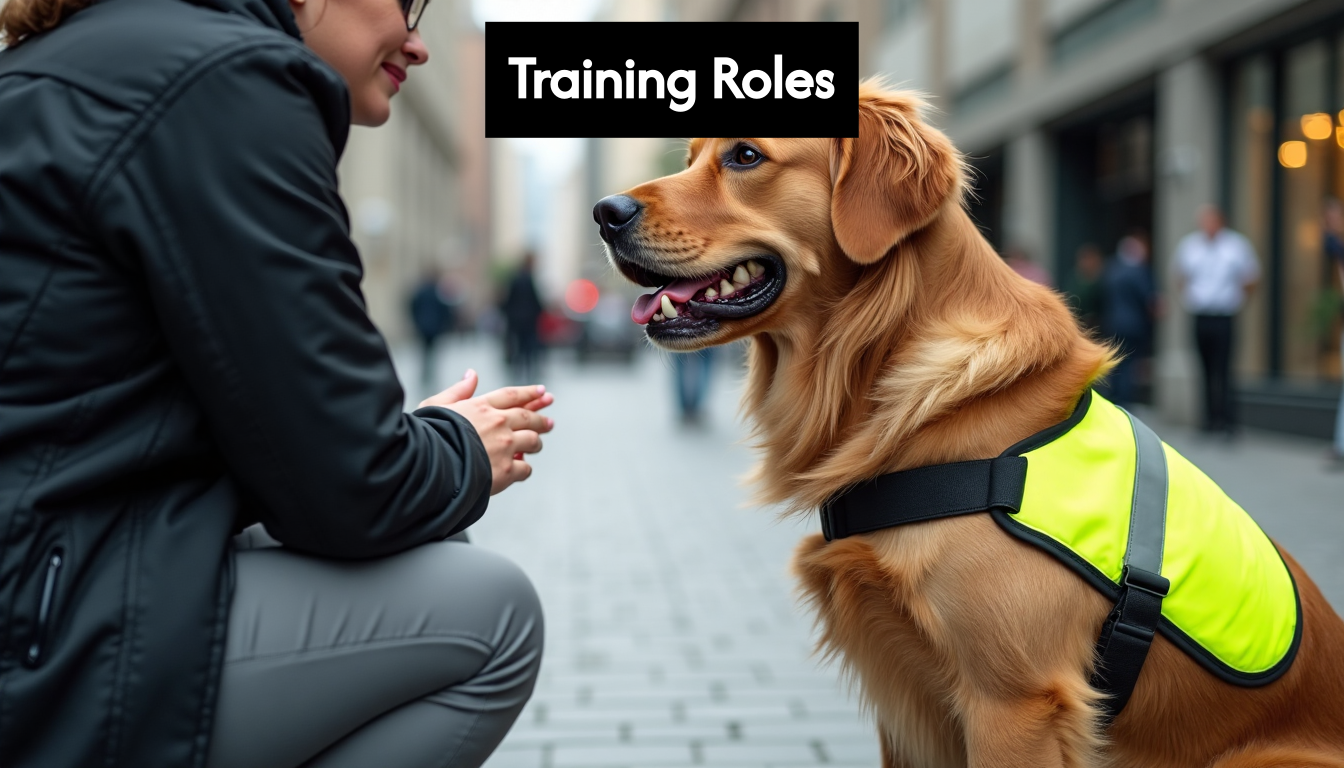
Adaptive Training Strategies
Working dogs such as search and rescue, police, or therapy dogs need specialized training that develops their natural instincts and enhances their innate abilities. Positive reinforcement techniques have proven particularly effective in building trust and motivation across different dog roles.
Key considerations for role-specific training include:
- Physical Capabilities: Matching training intensity to the dog’s breed and physical characteristics
- Psychological Profile: Understanding individual temperament and learning style
- Task Requirements: Developing skills specific to the dog’s intended role
Holistic Approach to Specialized Training
For owners seeking deeper insights into role-specific training, our comprehensive service dog skill guide offers detailed strategies for developing advanced canine skills. The most successful training programs recognize that every dog is an individual with unique potential.
Whether preparing a dog for professional work or simply enhancing family companionship, the key is flexibility, empathy, and a commitment to understanding each dog’s unique capabilities. Technology and scientific research continue to provide increasingly sophisticated tools for tailoring training approaches, ensuring that dogs can reach their full potential in whatever role they are destined to fulfill.
Effective Positive Reinforcement Methods
Positive reinforcement represents a revolutionary approach to dog training that transforms learning from a potentially stressful experience into an engaging, collaborative process. By focusing on rewarding desired behaviors rather than punishing unwanted actions, owners can create a more supportive and effective training environment that builds trust and enhances communication with their canine companions.
The Science Behind Positive Reinforcement
Research from animal behavior experts demonstrates that dogs trained using positive methods learn faster and retain commands more effectively. The key lies in understanding canine psychology and motivation. When a dog receives an immediate reward for a specific behavior, their brain creates a positive association, making them more likely to repeat that action in the future.
Immediate reinforcement is crucial. According to training professionals, rewards must be given within 1-2 seconds of the desired behavior to ensure the dog connects the action with the positive outcome. This precise timing helps dogs understand exactly what behavior is being celebrated.
Crafting an Effective Reinforcement Strategy
Successful positive reinforcement goes beyond simply giving treats. It requires a nuanced approach that considers each dog’s unique motivations and learning style. Some dogs might be food-motivated, while others respond better to play, praise, or specific types of attention.
Key principles of effective positive reinforcement include:
- Timing: Reward immediately after the desired behavior
- Consistency: Use the same reward markers and timing
- Variability: Mix up rewards to maintain engagement
- Gradual Reduction: Slowly decrease treat frequency while maintaining praise
Advanced Reinforcement Techniques
Our comprehensive guide on canine learning offers deeper insights into advanced positive reinforcement methods. Professional trainers recommend developing a personalized reward system that evolves with your dog’s skills and understanding.
The ultimate goal of positive reinforcement is not just teaching commands but creating a positive learning environment where dogs feel motivated to engage and learn. Research from the American Kennel Club highlights that this approach does more than teach skills—it strengthens the emotional bond between dogs and their owners.
By embracing positive reinforcement, owners can transform training from a challenging task into an enjoyable journey of mutual understanding and respect. The key is patience, consistency, and a genuine commitment to understanding your dog’s unique personality and learning style.
Building Lasting Habits for Every Dog
Building lasting habits in dogs requires more than simple repetition. It demands a strategic approach that combines scientific understanding, consistent practice, and genuine connection between dogs and their owners. Successful habit formation goes beyond teaching individual commands and focuses on creating a comprehensive learning environment that supports long-term behavioral development.
The Science of Habit Formation
Research from professional dog training organizations reveals that habit formation is a complex process deeply rooted in neurological and behavioral science. Dogs learn through consistent patterns, clear expectations, and positive reinforcement. The brain creates neural pathways that strengthen with repeated, rewarded behaviors, making each successful interaction more likely to become a permanent habit.
Consistency is paramount. Dogs thrive on predictable routines and clear communication. This means using the same commands, maintaining identical reward markers, and ensuring all family members follow the same training approach. Inconsistent signals can confuse dogs and significantly slow down habit development.
Strategic Habit Development Techniques
Developing lasting habits requires a multifaceted approach. Our comprehensive guide on canine learning emphasizes the importance of understanding individual dog personalities and tailoring training strategies accordingly.
Key strategies for building robust habits include:
- Incremental Learning: Break complex behaviors into smaller, manageable steps
- Regular Practice: Short, frequent training sessions are more effective than long, infrequent ones
- Environmental Management: Create settings that naturally encourage desired behaviors
- Emotional Connection: Build habits through positive, trust-based interactions
Long-Term Habit Maintenance
Professional training resources highlight that habit maintenance is an ongoing process. As dogs master basic behaviors, owners should gradually reduce treat frequency while maintaining verbal praise and emotional rewards.
The most successful habit-building approaches recognize that every dog is unique. Factors like breed, age, previous experiences, and individual temperament play crucial roles in how quickly and effectively new habits are learned. Patience, observation, and adaptability are key.
Ultimately, building lasting habits is about creating a positive, collaborative relationship where dogs feel motivated to learn and engage. By understanding their cognitive processes, providing consistent guidance, and maintaining a supportive environment, owners can help their dogs develop behaviors that become second nature. The journey of habit formation is not just about training—it’s about building a deeper, more meaningful connection between humans and their canine companions.
Frequently Asked Questions
What is smart dog training?
Smart dog training involves using customized methods tailored to a dog’s personality, learning style, and specific role, such as service or family pet, for more effective behavior modification.
How does positive reinforcement enhance dog training?
Positive reinforcement focuses on rewarding desired behaviors rather than punishing unwanted ones. This approach builds trust and encourages dogs to engage more effectively with their training.
How can technology be used in dog training?
Technology, such as mobile apps and online training programs, can help track a dog’s progress, provide access to professional guidance, and tailor training techniques to fit individual dog needs.
What strategies help in building lasting habits in dogs?
Effective strategies for building lasting habits include consistent practice, breaking complex behaviors into manageable steps, maintaining clear communication, and fostering an emotional connection through positive interactions.
Unlock Better Dog Communication and Safety With Smart Solutions
Struggling to build lasting habits or break through your dog’s communication barriers? You are not alone. Whether you are training a service dog or helping your companion master positive reinforcement, even the smartest strategies are held back by misunderstandings and missed signals. The article above highlights the real challenge: clarity and safety are critical, especially for families, disabled individuals, and those living alone.
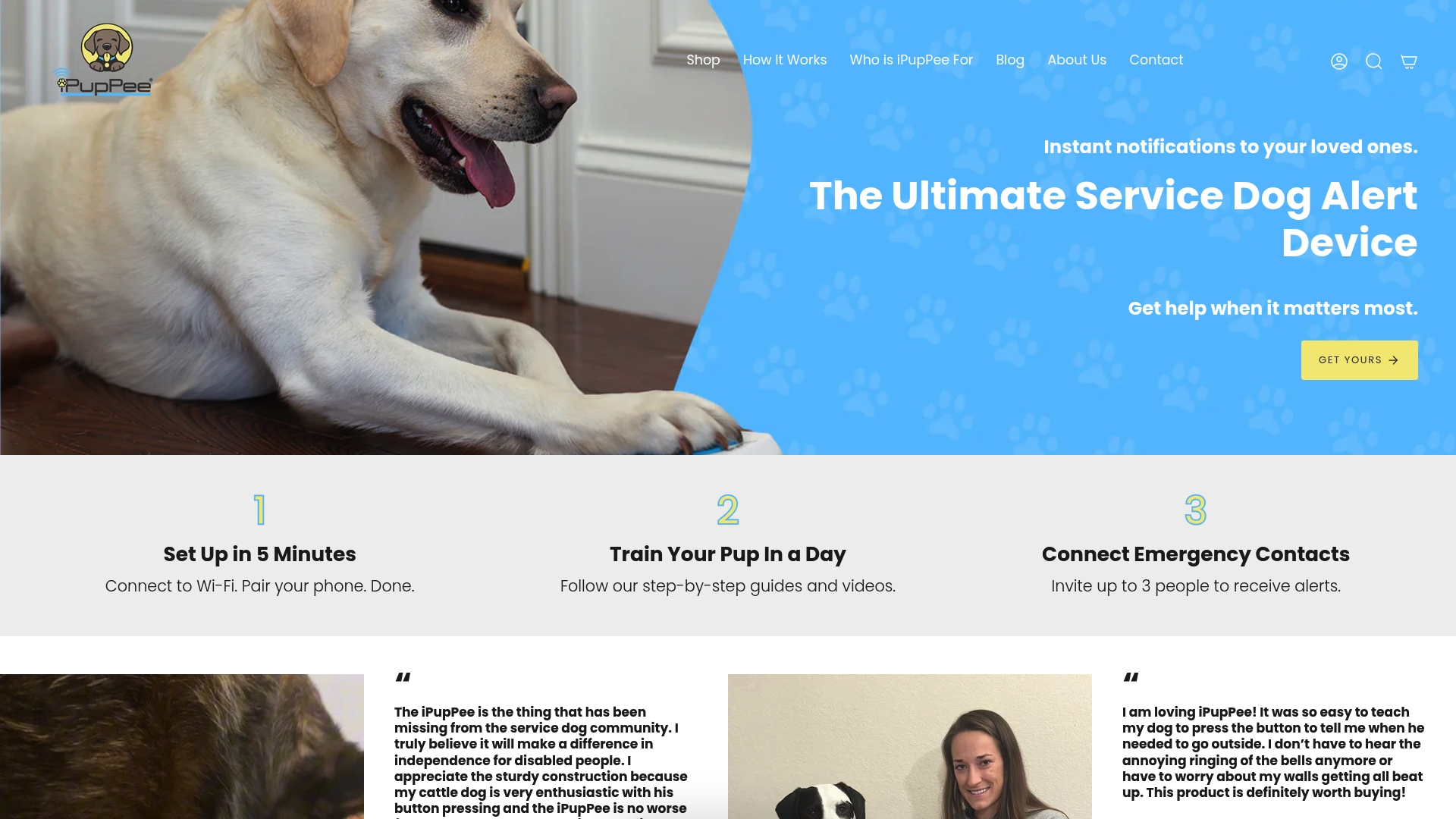
Give your dog a voice and keep your loved ones safer instantly. The iPupPee device empowers your training with interactive feedback, making daily routines easier and turning smart dog training into real-life independence. See how innovative pet tech can transform your home—learn how simple communication tools support your goals and unlock new levels of partnership by visiting iPupPee today.

